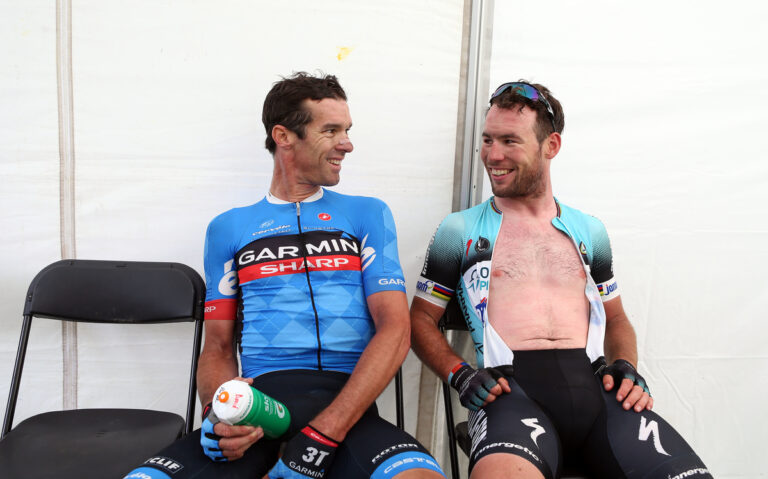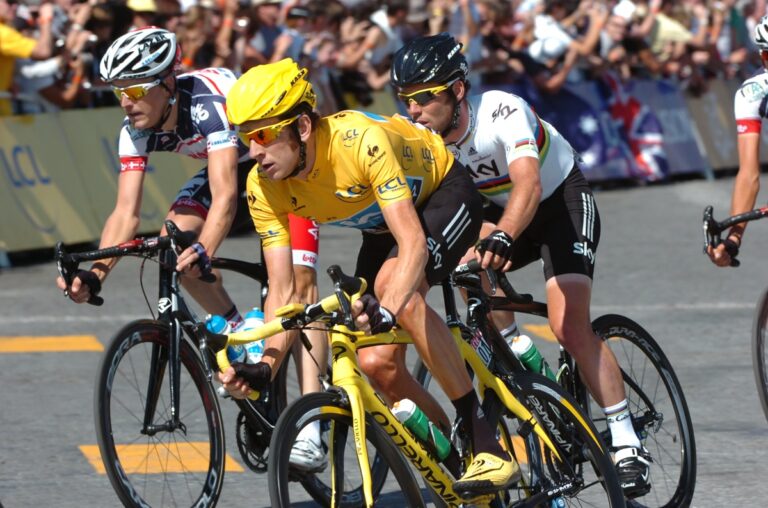The Specialized Tarmac SL4 Expert Di2 is fast and responsive – a serious bicycle for the serious business of travelling rapidly.
It’s not averse to longer distances (a test outing included 75 miles of the Lincoln GP sportive), but its primary function is speed, and there is more forgiving machinery available if comfort tops your agenda (Specialized would doubtless edge you towards their own, elastomer-equipped Roubaix).
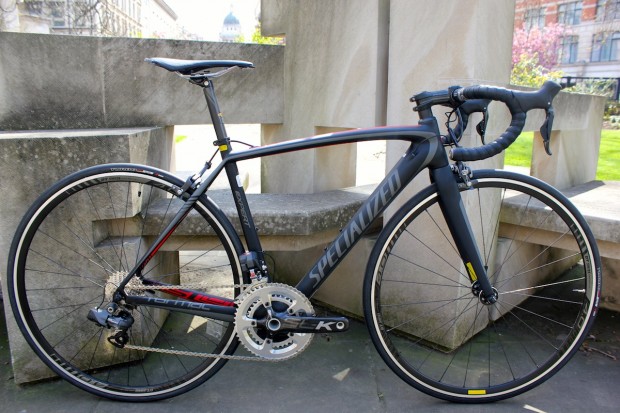
The Shimano Ultegra Di2 drivetrain provides flawless if uninspiring shifting, but the DT Axis 4.0 wheels are vastly inferior to the chassis and its other components, and should be the subject of an early upgrade.
The chassis
Specialized’s FACT carbon proved to be stiff everywhere, but not excessively unyielding. The ride quality was excellent, one of the smoothest we’ve encountered.
The 73-degree head angle combined with a 120mm head tube to provide an uncompromising position at the front end of the bike, the area at which Specialized have focussed most of its carbon real estate. The result was a directness that inspired confidence and a low position that may not suit all.
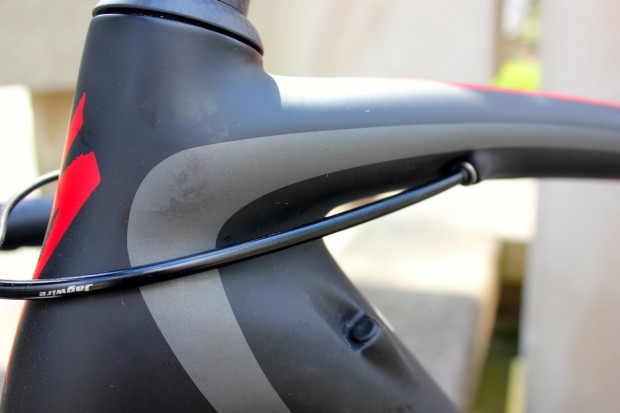
The bottom bracket, while lacking the girth of some we have tested, exhibited no flex, and the power transfer afforded by the chainstays, 50mm deep at their exit from the bottom bracket shell, was immediate. The latter combined with a 490mm wheelbase to offer an instant response to input from the pedals.
Narrow seat stays offered a degree of compliance impressive for a machine not intended as a steed for leisurely cruising. All things are relative, and for a race bike (for this is what the Tarmac is, ultimately), it was fairly easy going, but all told, we’d say the high-quality construction and inherent smoothness of the ride made a greater contribution to the pleasure of riding the SL4 than its limited concession to comfort.
The components
Much of the £4,000 price tag commanded by this range-topping iteration of the Tarmac Expert SL4 is accounted for by the Shimano Ultegra Di2 electronic groupset, we suspect (its mechanically-equipped Ultegra sister is £1,000 cheaper). Whether this represents a sensible allocation of budget will depend very much on the value you place on electronic shifting.
There’s not much to add here to that which has already been written about Ultegra Di2 several hundred times: the shift is eerily precise, in any conditions, and under any load, and the front mech’s self-correcting facility to eliminate chain rub seems little short of magical.
For this correspondent, however, it’s also uninspiring and unengaging, removing at a stroke any rider involvement in obtaining a smooth shift, a subtle but satisfying input demanded even by the best mechanical set-ups.
This, of course, is a personal opinion, and the second iteration of the flagship Dura Ace Di2 groupset, one launched, no doubt, on the back of healthy sales from the first, shows it to be a minority view.
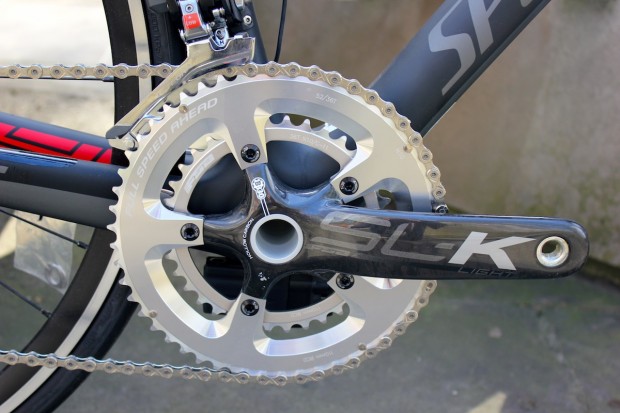
What is perhaps less open to debate, however, is that money saved on choosing mechanical shifting over electronic is free to be invested in other areas of the bike, and another view on which there is common consensus is that investment in wheels will yield greater performance gains than that made in any other area of the bike. Which brings us to…
The DT Axis 4.0 hoops were the great failing on an otherwise excellent bike. Heavier colleagues are able to uncover flex more easily than your, ahem, ‘slimline’ correspondent, but it took disappointingly little effort to find it here, with out-of-the-saddle efforts on steep-ish hills the principle method of detection.
Finishing kit was functional, rather than inspiring. It felt good to be back behind our regular 40cm bar after riding the 42cm offering surprisingly specced on this 52cm test bike. The Toupe Comp saddle suited us, but few areas of the bike are as subject to personal preference, so we’ll stop short of a recommendation.
Finally, the chainset. Our first response to the presence of an FSA SL-K Light unit amid an otherwise full deployment of Ultegra was to tut and shake our head, and while we’re aware of Shimano’s aversion to BB30 and Specialized’s favouring of it, we felt an all-Shimano solution could have been achieved, if at the admittedly additional expense of convertor kit. In practice, however, there was nothing to fault the performance of FSA’s turbine, and once we’d overcome our perhaps compulsive dislike of disorder, we grew to admire its sleek carbon-and-CNCd-aluminium good looks.
Conclusion
If you’re looking for a chassis that delivers a smoother ride than the Tarmac Expert SL4, good luck. There aren’t many in our experience. Don’t be misled, however, by the presence of the Venge, the choice of a certain full gas sprinter, into thinking the Tarmac is the soft option. It isn’t. The Tarmac is in every carefully allotted inch and demanding angle, a race bike. We rather like it that way, and would consider it the equal of similarly priced and oriented machines we’ve tested this year – the Bianchi Sempre Pro and Giant TCR Advanced SL4 spring immediately to mind.
Its wheels, however, are inferior to those supplied with either of these machines, and if the Tarmac SL4 Di2’s £4,000 asking price represents your budget ceiling, we’d advise giving some hard thought to the relative importance of electronic shifting, and the possibilities of the £3,000 mechanical Ultegra-equipped Tarmac SL4 equipped with a £1,000 wheelset.
Website: Specialized

